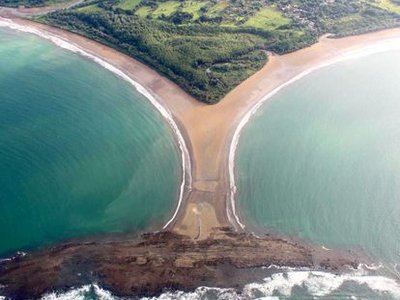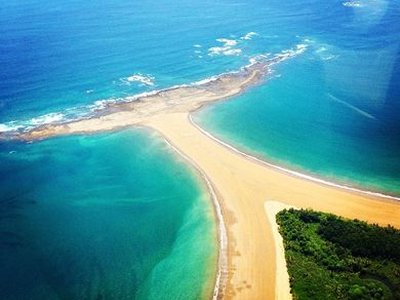Punta Uvita Tombolo


Like clockwork, humpback whales journey
to the Costa Rican coast. It’s a cycle, the natural world marking time by the waves, the currents, the temperature. They head to
Marino Ballena National Park
, a park so known for this seasonal migration it takes its name from the animal,
ballena
being the Spanish word for whale. But it’s not just the actual whales that make this park so perfectly named. A rocky, sandy area formed by the ever-present tides, holds another reason.
At low tide this strip of land transforms into Tómbolo de Punta Uvita, the Whale’s Tail, La Cola de la Ballena. When viewed from above, the geological formation takes shape. The sand and water curve against the coast forming, what looks like, a giant whale tail. This natural feature called a tombolo, is formed when an island becomes connected to the mainland through a narrow sand deposit, often only revealing their connection at low tide. The result can be anything from a long, sandy pathway to the curved arcs of the Whale’s Tail.
Because Tómbolo de Punta Uvita is one of the tombolos that holds its secret until the tide is out, it can only be seen at low tide. Entering the park through the Uvita Sector, which is located in the coastal town of Uvita, this part of the park isn’t just notable for this unique landmark.
While heading to the Whale’s Tail, you’ll be adventuring through a few of the park’s 420 acres (and this doesn’t include its nearly 13,000 acres of protected waters), and pass by the Estero Negro, an estuary where you can see mangrove forests—partially submerged plantlife found throughout the country’s coastlines. Along the way, you might also catch sight of some of the area’s numerous wildlife, including pelicans, iguanas, hammerhead sharks, and dolphins. Once the tombolo reveals itself, you’ll experience a beautiful view along the calm waters of the country’s first marine park.